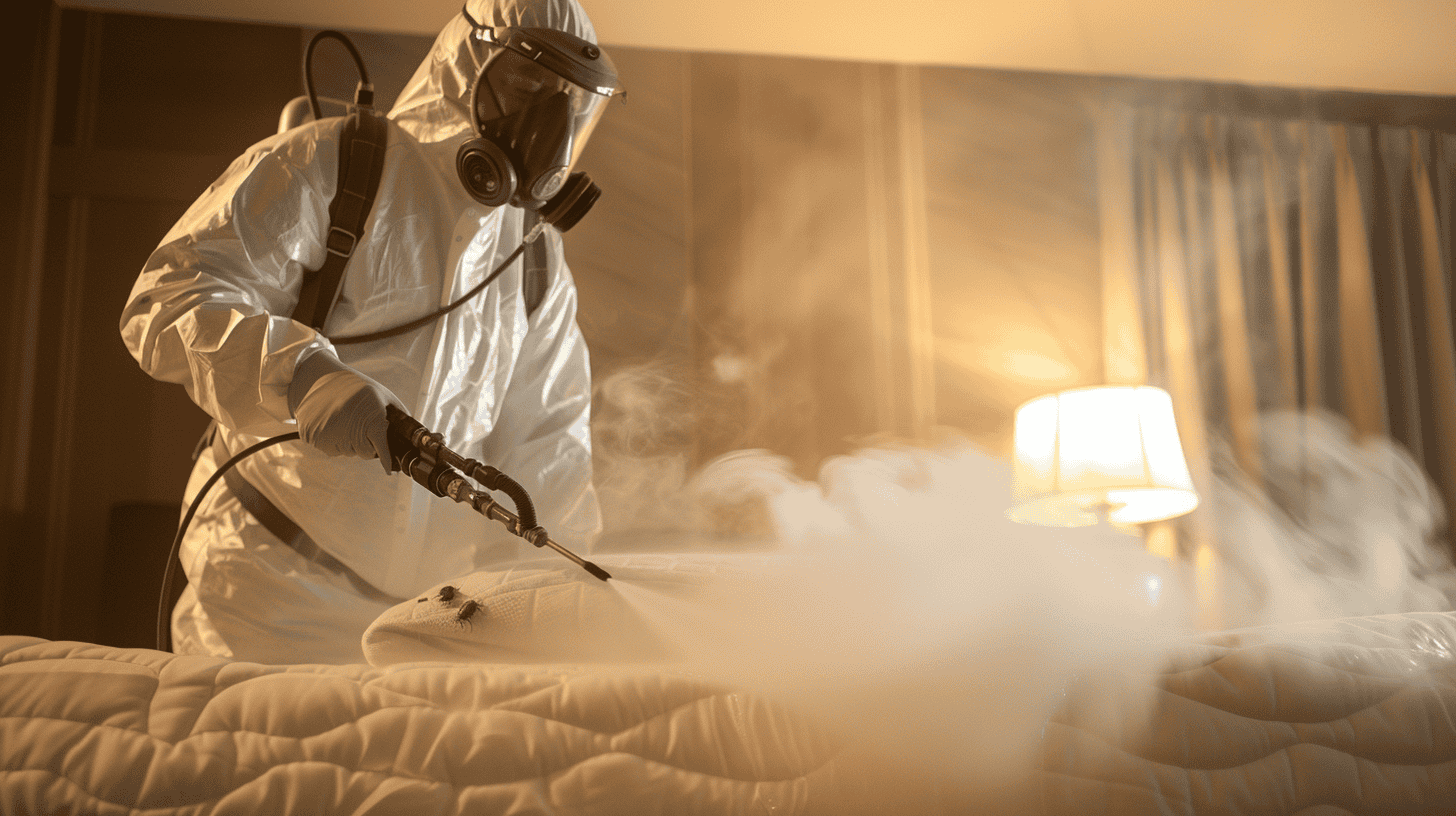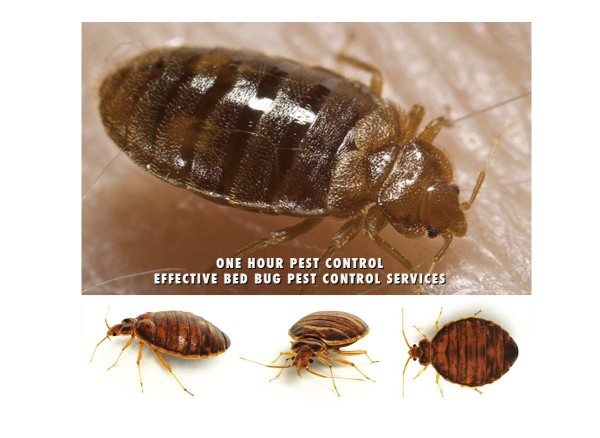Bed Bug Eggs Removal: Expert Solutions to Prevent Reinfestation
Get Educated Concerning the Sorts Of Parasite Control Techniques and Their Benefits for Property Owners
Comprehending the numerous bug control approaches available to house owners is vital for efficient pest administration. House owners who are educated can make tactical choices that not only address bug concerns but also improve the general quality of their living environment.
Chemical Bug Control Methods
Chemical bug control approaches are an important element of integrated parasite monitoring methods for property owners seeking efficient solutions to pest infestations. These techniques entail the application of chemical substances designed to get rid of or discourage bugs that intimidate individual building, wellness, and convenience. Usual chemicals utilized include insecticides, herbicides, rodenticides, and fungicides, each customized to target particular bugs.
The main advantage of chemical insect control is its fast performance; lots of formulations provide instant results, decreasing pest populations dramatically quickly. In addition, advances in chemical formulas have resulted in products that are extra eco-friendly and have lower toxicity levels for non-target microorganisms when applied appropriately.

Biological Parasite Control Methods
Natural pest control methods have actually gotten importance as property owners look for safer and more lasting options to traditional chemical techniques. Biological parasite control methods utilize natural killers, parasites, or virus to take care of bug populaces efficiently. This technique is not just environmentally friendly yet likewise reduces the danger of injury to non-target varieties, including advantageous bugs and wildlife.
One of one of the most common biological control approaches entails introducing all-natural predators into the environment. Ladybugs can be made use of to regulate aphid populations, while nematodes target soil-dwelling pests like grubs. Additionally, parasitoids-- organisms that survive on or within a host-- can be employed to control specific pest varieties by laying eggs inside them, ultimately bring about their demise.
One more approach is the use of biopesticides, which are acquired from all-natural materials such as plants, bacteria, or minerals (bed bug exterminator). These items can effectively target insects while positioning very little danger to pet dogs and people. On the whole, biological bug control techniques supply home owners with an efficient ways of bug monitoring that lines up with eco-friendly concepts, advertising a healthier living environment while decreasing dependence on artificial chemicals
Mechanical Parasite Control Techniques
Mechanical parasite control strategies encompass a range of methods that physically protect against or eliminate insects without using chemicals. These strategies are specifically helpful for home owners seeking environmentally pleasant alternatives while ensuring the safety and security of their living rooms.
One common method is using obstacles, such as screens, traps, and webs, which prevent pests from going into homes or specific locations. Installing window displays can properly maintain insects out, while using physical obstacles around yards can deter bigger bugs like rabbits or deer. Additionally, mechanical traps made for rodents can record and remove these pests without the need for poisonous materials.
An additional effective approach entails making use of vacuum cleaners and mops to get rid of bugs straight from surface areas. Regular cleansing and maintenance can considerably reduce pest populaces by removing food sources and hiding areas. Employing tools like ultrasonic parasite repellents can prevent different insects through noise waves that are unpleasant to them but faint to human beings.
Cultural Parasite Control Practices
Social bug control methods concentrate on customizing the environment and management strategies to produce problems that are much less helpful to pest infestations. These practices are essential in keeping a well balanced community and minimizing the reliance on chemical interventions. By modifying agricultural techniques, homeowners can successfully prevent insects while advertising plant health.
One usual strategy includes crop rotation, which interrupts the life process of insects by transforming the kinds of plants expanded in a details location (bed bug exterminator). This not just reduces pest populaces however likewise boosts soil wellness. In addition, intercropping-- planting diverse plants in closeness-- can perplex insects and lower their capability to find their favored host plants
Water administration is another essential facet of cultural practices. Proper watering methods can protect against standing water, which serves as a breeding place for insects and other parasites. In addition, preserving tidiness in and around the home, such as on a regular basis eliminating debris and food waste, can dramatically minimize bug tourist attraction.
Integrating these social techniques into a detailed pest administration technique permits homeowners to produce an atmosphere that normally discourages bugs, thus boosting the efficiency of other control techniques while promoting sustainable gardening and landscaping.

Integrated Pest Monitoring Approaches
Integrated Pest Monitoring (IPM) stands for a holistic method that integrates various methods to successfully manage pest populaces while minimizing ecological effect. This methodology incorporates organic, cultural, physical, and chemical techniques to attain lasting pest control. By evaluating pest populaces and their natural adversaries, IPM emphasizes tracking visit this page and recognizing parasites prior to applying control steps.
Among the core concepts of IPM is making look at here now use of thresholds, which develop the degree of insect activity that calls for treatment. This guarantees that therapies are applied just when required, reducing the reliance on chemical pesticides. Biological control methods, such as presenting natural predators or bloodsuckers, work in conjunction with cultural practices like plant turning and environment manipulation to interrupt pest life process.
Furthermore, IPM motivates making use of least-toxic chemical alternatives when intervention is needed, prioritizing products that pose marginal danger to non-target microorganisms and the environment. For property owners, taking on IPM comes close to not just improves the effectiveness of pest monitoring but also advertises a healthier living atmosphere, promoting biodiversity and lowering chemical exposure. Inevitably, IPM empowers house owners to make informed choices that stabilize pest control with ecological duty.
Conclusion
In verdict, understanding the different bug control techniques equips homeowners to make informed choices relating to pest monitoring. Each technique-- chemical, organic, mechanical, social, and incorporated bug administration-- offers distinctive benefits that satisfy various demands and preferences. By choosing ideal strategies, homeowners can properly handle bug populaces while reducing wellness dangers and environmental impacts. This enlightened strategy adds to a healthier living atmosphere, advertising general well-being for pets and family members alike.
Understanding the numerous parasite control approaches available to homeowners is necessary for effective insect management.Chemical bug control approaches are an essential element of integrated parasite management techniques for house owners seeking effective services to pest infestations. Overall, biological insect control techniques provide property owners with an effective means of pest administration that aligns with eco-friendly principles, promoting a healthier living setting while reducing reliance on synthetic chemicals.
Social insect control techniques focus on modifying the environment and administration strategies to produce conditions that are much less conducive to pest invasions.In verdict, understanding the various pest control approaches equips house look at more info owners to make educated decisions regarding pest management.